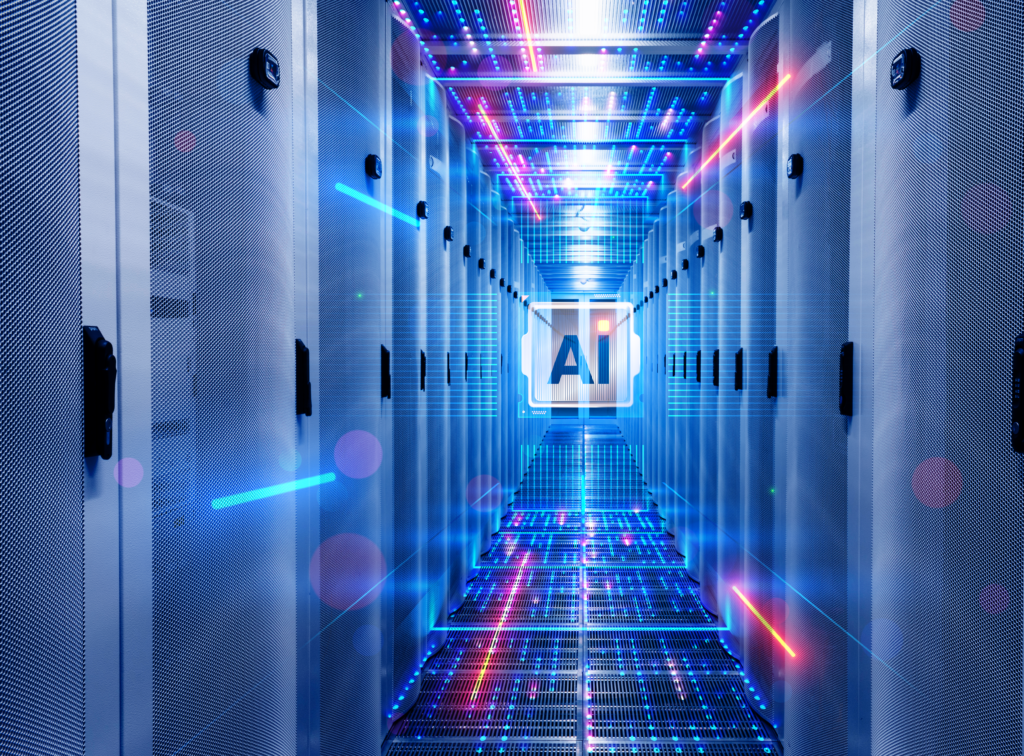Artificial intelligence (AI) has quickly evolved from an emerging concept to a core part of Canada’s business infrastructure. As adoption accelerates, organizations are making more focused investments in AI to solve real business challenges and enhance decision-making. As a result, the infrastructure supporting AI is under increasing demands and pressure.
Our recently commissioned ‘AI Workload Strategies 2025’ research, conducted by S&P Global Market Intelligence 451 Research shines a light on the scale of the challenge:
- 55% of global businesses report significant networking issues impacting AI adoption
- 39% have had to abandon AI initiatives altogether due to connectivity constraints
For Canadian data centres to help organizations avoid further setbacks and fully capitalize on the potential of AI, they must stay ahead of demand. That means advancing interconnection, increasing density, and addressing power, cooling, and wider industry coordination.
Connectivity is becoming a dealbreaker

AI applications depend on high-speed, low-latency connections to move data seamlessly between clouds, GPU clusters, and on-premises environments. As workloads increase in size and complexity, older static network models are struggling to keep up.
Our survey points to a clear trend. 97% of companies say direct access to cloud platforms, commonly known as cloud on-ramp, is now critical or important to their AI strategies.
Yet reliably delivering this kind of interconnection at scale remains a major hurdle. Training large models requires fast and consistent data flow across environments, and many data centres have not originally been built with AI in mind.
Canadian cities like Toronto are witnessing a surge in fibre network expansion and the rise of carrier-neutral data centres. These interconnected hubs are designed to support the low-latency, high-resilience infrastructure that AI workloads demand, setting the benchmark for future-ready facilities.
In downtown Toronto, Telehouse Canada’s three carrier-neutral facilities are equipped with AI-supportive infrastructure to meet the scale, speed, and interconnection demands of AI deployments and enable AI at the edge.
Supporting higher density infrastructure – and the power to match
AI workloads are pushing data centres far beyond traditional capacity limits, demanding updates across multiple areas:
- Higher rack densities: Traditional Canadian data centres typically operated under 10kW per rack, but AI deployments now often exceed that, especially when GPUs are involved. Telehouse Canada’s infrastructure is engineered for flexibility, adapting to different workload and density requirements.
- Advanced cooling: Our 151 and 250 Front Street West data centres utilise Enwave’s Deep Lake Water Cooling System, an innovative cooling system that reduces power consumption and sustainably manages thermal output. Telehouse Canada customizes cooling solutions to meet the specific needs of different AI workloads, ensuring optimal performance and energy efficiency.
- Power capacity planning: As energy demand is rising fast, securing additional power from utilities, especially in urban cities like Toronto, can take time. This highlights the need for long-term planning rather than reactive upgrades.
- Flexible facility design: Not all AI workloads are the same. There is growing recognition that training and inferencing require different setups, prompting data centres to adopt mixed-density designs that can support both effectively.
These changes are now foundational for data centres aiming to support the next generation of AI applications.
Getting AI-ready means working together
AI is rapidly reshaping infrastructure demands, creating pressure across the ecosystem. Meeting these demands will take closer collaboration between data centre operators, utility providers, AI specialists, and regulators. Traditionally competitive and often fragmented, the Canadian data centre industry is now recognising the benefits of coordinated action to tackle shared infrastructure challenges.
Key focus areas for collaboration include:
- Setting common standards for interoperability and security: Aligning on security protocols and interoperability requirements helps streamline data movement across facilities and platforms – essential when AI workloads are distributed across hybrid environments.
- Harmonizing cooling and power requirements: As advanced cooling methods like direct-to-chip liquid cooling become more common, shared approaches and technical standards can ease the deployment and ensure reliable performance at higher densities.
- Accelerating access to critical infrastructure: Joint and Coordinated efforts with utility providers and telecoms can speed up access to essential resources like fibre and power, particularly in urban areas where demand is already high and provisioning timelines are long.
- Ensuring sustainable growth across regions: Collaboration enables infrastructure expansion with balance among performance, cost and sustainability, especially as AI workloads begin to spread beyond traditional business hubs.
Getting ahead of the curve
There is no doubt that AI is reshaping how Canada’s data centre facilities are built, connected, and operated. To stay ahead, providers need to focus on three areas: advanced connectivity, next-generation power and cooling, and stronger industry collaboration. Getting this right will position them to lead, not just keep pace, as AI continues to evolve. The groundwork laid today will define the country’s ability to compete and innovate in the years ahead.
Support your AI investments with Telehouse Canada
At Telehouse Canada, we understand what is at stake as businesses scale their AI capabilities. Our data centre solutions and infrastructure tailored to handle the high-density, high-performance demands of AI workloads and support AI deployment at the Edge– without compromising on security or compliance.
From robust interconnection options to scalable colocation environments, we empower companies expand their AI infrastructure with confidence. Whether you are training large models or deploying real-time inference, our facilities are designed to keep pace with your evolving needs.
Ready to scale your AI infrastructure? Learn more about how Telehouse Canada can support your strategy here.
